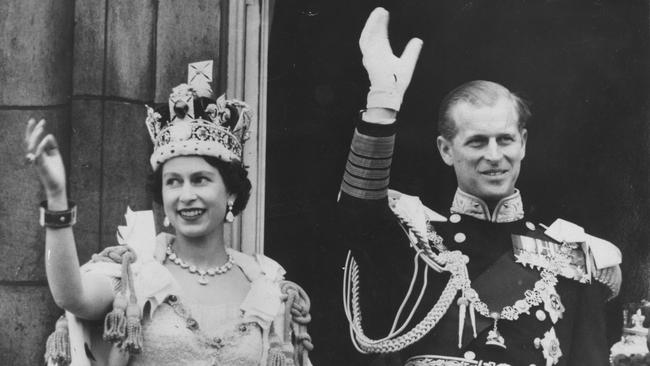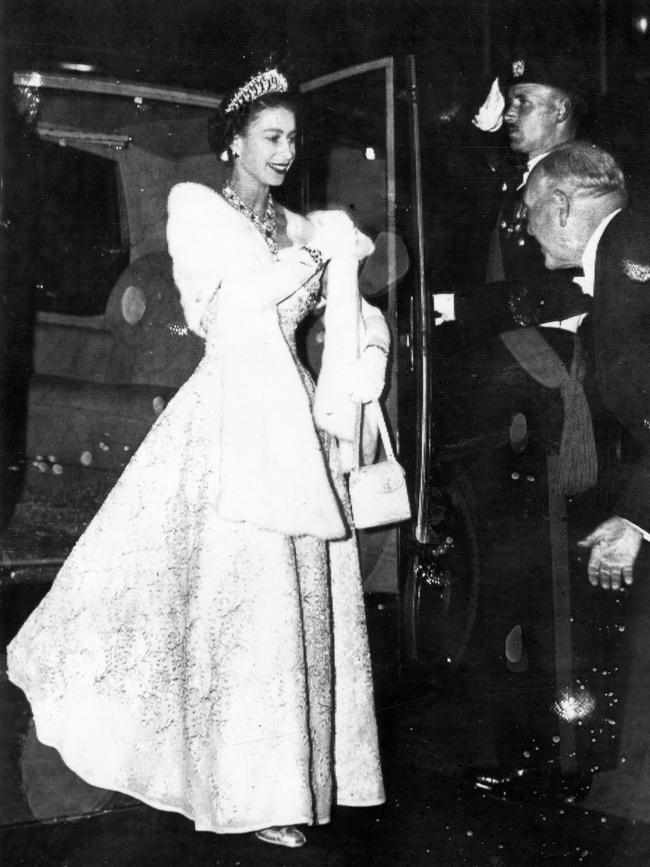King’s coronation less of an affront to Catholics today
Even though sectarianism has diminished significantly in Australia since the coronation of the Queen, I would still vote Yes in a republican referendum.

Needless to say, the coronation of the glamorous young Elizabeth created both considerable interest and a sense of happiness throughout the nation, which was exceeded by the royal tour of Australia the following year.
However, our Catholic parish priest at the time was not amused. During a sermon at Sunday mass at our church in the Melbourne suburb of Deepdene (we lived up the road in Balwyn) the Irish-born Father Laurence Goodwin told the assembled brethren that it was all well and good to be joyous at this time.
However, he reminded the congregation that Westminster Abbey, the site of the coronation then as now, was once a Catholic church – before the English Reformation and all that. In short, Fr Goodwin’s essential point was that the abbey was stolen from our lot by the Protestants. Even as a young boy, I got the message. After all, this acquisition of property had occurred only 450 years ago, a long time after Peter became the first Pope.
The reference was to Henry VIII’s split with the Catholic Pope circa 1534 and the fact his daughter Elizabeth I had presided over the rise of Protestantism in England. To our parish priest it was all too soon to forget or forgive.
In 1953, the monarch of the United Kingdom of Great Britain and Northern Ireland was also Defender of the Faith and chief governor of the Church of England. King Charles III retains these positions today. There was a time when Charles indicated his intention to be Defender of Faith – rather than “the faith”.

However, the details of the liturgy for the coronation of King Charles – commissioned by the Archbishop of Canterbury, Justin Welby (the principal leader of the Church of England) – was published on the Lambeth Palace website last Saturday. It reveals that Charles’s coronation will be essentially a Church of England service during which the King will promise to maintain “the Protestant Reformed Religion”.
In other respects, Saturday’s service will differ from that of seven decades ago – reflecting the changing face of Britain and the realms over which the sovereign presides (including Australia). The British Prime Minister, Rishi Sunak, a Hindu, will read a new epistle for the coronation, from Colossians 1:9-17.
Moreover, female bishops of the Church of England will participate in the coronation.
A young chorister will greet the King and the service will include languages other than English associated with the British Isles, namely, a prayer in Welsh plus a hymn sung in Welsh, Scottish Gaelic and Irish Gaelic. And representatives of Judaism, Islam, Hinduism and Sikhism will be present along with the Catholic Archbishop of Westminster.
And then there is the controversial part. What in 1953 was the homage of the peers has been replaced by the homage of the people. It would appear that Buckingham Palace thought this would unite the British people along with those of the various realms.
A serious misjudgment, it would appear. Archbishop Welby will call on “all persons of goodwill in the United Kingdom … and of the other realms and territories to make their homage, in heart and voice, to their undoubted King, defender of all”.
Those who so desire will swear their true allegiance to “Your Majesty and to your heirs and successors according to law”.
Archbishop Welby will then proclaim “God save the King” and ask those willing to respond with: “God save the King, long live King Charles. May the King live forever.” This is somewhat over the top. It’s a bit much even for the Archbishop of Canterbury to petition the Almighty that King Charles be immortal. It’s a big ask.
Around the time of the previous coronation, it was not uncommon to find in what were called milk bars signage that read: “Please don’t ask for credit, a refusal often offends.” The problem with asking citizens to proclaim their allegiance is that some are likely to decline.
A recent YouGov poll in Britain indicates that around two-thirds of the population favour retaining the monarchy. It was as high as three-quarters a decade ago when Queen Elizabeth II was on the throne. Moreover, young people are less enthusiastic about the monarchy than older Brits.
And then there is the opposition in the realms to having a head of state of British nationality who resides in Britain.
I voted Yes in the republican referendum in 1999 and would do so again if a similar model was presented; that is, a president chosen by two-thirds of all the members of the House of Representatives and the Senate.
This is not the form of an Australian republic currently favoured by the Australian Republic Movement.
In his interview with Piers Morgan, that aired in Australia on Sky News on Wednesday, Anthony Albanese – an avowed republican – said he would join in the oath of allegiance to King Charles. And properly so – since, as the Prime Minister told Morgan, this is “entirely appropriate as the representative of Australia”.
Albanese also indicated that he did not see another referendum on Australia becoming a republic “as being imminent”.
This also makes sense, particularly since those who favour an Australian head of state are once again divided over the direct-election proposal.
Since European settlement in 1788, there have always been differing views about the monarchy. Those of the Protestant faith tended to look to the Protestant monarch in Buckingham Palace in London, while those of Catholic faith tended to look to the Pope in Vatican City. Both groups were primarily loyal to Australia.
Australia has changed much since 1953, as has Britain. This has been to the benefit of both nations. Unlike his mother, King Charles is head of state of a multicultural society at home and abroad. The coronation service on Saturday reflects this.
And Fr Goodwin’s sermon maintains its historical legitimacy despite the fact anti-Catholic sectarianism has diminished significantly in multicultural Australia.
Gerard Henderson is executive director of the Sydney Institute.





I remember well the coronation of Queen Elizabeth II in June 1953. In those days of pre-television Australia, the pictures we saw of this glittering occasion came in newspapers and magazines, or on black-and-white Cinesound newsreels that ran at hourly shows in designated cinemas.